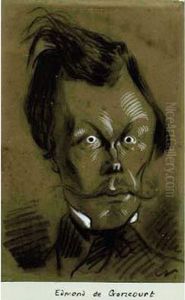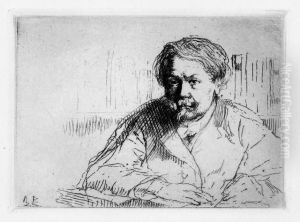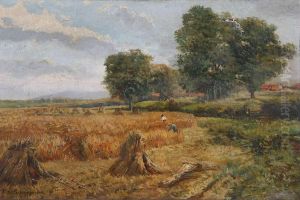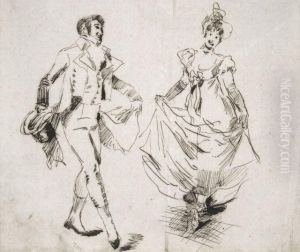Edmond De Goncourt Paintings
Edmond de Goncourt, born Edmond Louis Antoine Huot de Goncourt, was a French writer, literary critic, art critic, and a founding member of the Académie Goncourt. He was born on May 26, 1822, in Nancy, France. Alongside his brother, Jules de Goncourt, he became part of one of the most famous literary partnerships in France. The brothers came from a bourgeois family and were initially interested in the art world, which would later significantly influence their literary work.
Edmond and Jules started their careers as art critics but gradually shifted towards literature. They co-authored several novels, journals, and studies on French 18th-century art and society. Their collaborative works are considered important for the detailed and realistic portrayal of the lower and middle classes in France during the second half of the 19th century. Some of their notable works include 'Germinie Lacerteux' (1864), 'Manette Salomon' (1867), and 'Madame Gervaisais' (1869). Their literary style was associated with the Naturalist movement, which sought to observe and depict reality as precisely as possible, and they were contemporaries of Emile Zola and other literary figures of the era.
The death of Jules de Goncourt in 1870 was a turning point for Edmond. He continued to write and maintained the diary they had kept together, which remains an important resource for understanding the literary and artistic life of the period. Edmond's later years were dedicated to building the legacy of the Goncourt brothers. He established the Académie Goncourt in 1886, which was responsible for creating the Prix Goncourt, one of France's most prestigious literary awards, still given today.
Edmond de Goncourt died on July 16, 1896, in Champrosay, France. His contributions to literature and art criticism, as well as his role in the establishment of the Prix Goncourt, have left an enduring mark on French culture. The Goncourt journals, which detail the intellectual life of Paris over several decades, remain a valuable historical source and a testament to the brothers' lives and their impact on the cultural milieu of their time.



